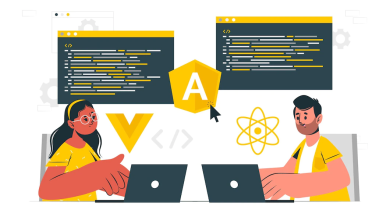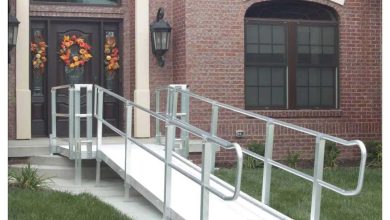Proven Methods for Speeding Up Your WordPress Site

Nowadays, many websites are powered by WordPress (WP). This content management system (CMS) has gained a lot of popularity over the years. That’s why WP favors 65.1% of the market share and 43% of all websites in the world are hosted on this platform.

[Source: Unsplash.com]
Be that as it may, WP is still open-source software. Even though it has numerous advantages, WP websites tend to get sluggish. The main reason is that WP users don’t really understand how various customization options affect their website speed and performance.
Moreover, people often opt for free versions of various features. These features are capable of doing what they are supposed to do but they are not really big on performance and optimization. Fortunately, there’s a way to overcome these challenges and tweak your WP site so that it not only looks great but also works great.
After all, you have to consider what your website visitors want and expect. The goal is to have a lot of website traffic but also retain as many visitors as possible. You simply can’t have that if your website isn’t fast enough. With that in mind, here are a few proven methods for speeding up your WordPress site.
1. Avoid shared hosting
As you may already know, every website needs a hosting provider so that it can operate properly and appear online, in the first place. There are many hosting providers for WP and they all offer various hosting services.
Still, people usually go for the cheapest option available to them, which is shared hosting. Shared hosting means that your website shares server resources with a lot of other websites. This isn’t necessarily a bad thing, especially when your website is new, your budget is low and your web traffic isn’t great.
However, once your site starts to gain more popularity and your web traffic increases, you’ll most certainly experience more downtime and slow page loading time.
After all, there may be as many as 200+ websites hosted on one server at any given time. A single server simply cannot handle that much load. Therefore, avoid shared hosting if you can. Here are some of the other hosting services that may suit your need more efficiently.
Hosting server types
- Dedicated Hoisting – As a direct opposite of shared hosting, dedicated hosting means you get a server with all its resources for yourself. This is a more expensive solution but it usually comes with valuable features, such as cPanel features for more control over your website’s content.
- VPS Hosting – Virtual Private Server (VPS) is a combination of shared and dedicated hosting. You get your own virtual private server but the main server is shared with others. This is a slightly better option than shared hosting but it might not be enough if you plan on having a lot of web traffic in the future.
- Cloud Hosting – Cloud computing has made its way even in hosting services. Cloud-based hosting works as an IaaS (Infrastructure as a Service). You basically subscribe to whatever you need to for hosting your website and you can scale up and down as you see fit.
Additional server features
Aside from hosting services, server uptime is vital for your website speed and overall page loading time. If there are any maintenance or updates to WP or the hosting server directly, it should affect your website’s performance. That’s why it’s vital that you choose a hosting provider that guarantees at least 99.99% uptime for your WP site.
That way any updates and repairs are conducted in the background and implemented seamlessly so that none of your website visitors can notice. Additionally, hosting providers offer more features to prevent data loss and external breach attempts that could slow and eventually crash your website altogether. Here are some of the features to keep an eye on.
- Security software, such as anti-virus, anti-malware, anti-ransomware etc.
- Integrated firewall feature.
- DDoS (Distributed Denial of Service) protection.
- Anti-spam and other email features.
- SSL/TLS certificates.
- Active and continuous monitoring.
2. Don’t overdo it with plug-ins
Plug-ins are one of the most popular features of WP websites. You can find a plug-in for almost anything you want. People who are not very tech-savvy tend to use a lot of plug-ins on their sites. After all, if a plug-in can do something for you, why should you bother to do it yourself? Although that’s an interesting point of view, there are so many ways it can go wrong.
As mentioned before, WP is open-source software and so are the plug-ins. What that means is that plug-ins are created by third-party developers and they’re built with a specific purpose in mind. Whether or not they’re compatible with your theme, other plug-ins or some specific elements of your website doesn’t really concern the creators of the plug-in.
However, it does concern you. Too many plug-ins and your website will get bloated. Bloated websites are generally slow and prone to security issues. If you really need a specific feature on your WP site, it’s better to find a custom website design agency to create it for you. That way you’ll ensure that the feature is coded directly into your website so you won’t have to worry about compatibility or any other issues. If there’s, in fact, a problem, you’ll have proper support and developers who will fix the issue.
3. Free vs. Paid WP themes
Your WP theme can greatly affect your website speed and page loading time. As you already know, there are tons of WP themes available for you to choose from. Some themes are free, while others need to be paid for. So, what’s the big difference?
After all, if there’s a free theme that will do the job and make your site pretty, why would anyone want to pay for one? In order to answer that question, let’s dig a bit deeper into what free WP themes really are.

[Source: Unsplash.com]
Free WP themes pros
- First of all, they are free and you can switch between themes to experiment and determine which theme suits you the best.
- All free WP themes are approved by official WP developers. The theme must go through an official coding process before it’s officially approved and released into the theme directory.
- Free themes are easy to use and have a minimalist design.
- They are also compatible with most WP plug-ins.
Free WP theme cons
- Limited features with no extra functionality that some professional websites need.
- Free themes are not unique. Some themes have over 1 million downloads so your website won’t stand out.
- Free themes have no support. They are not updated making them incompatible with frequent WP updates.
- Free themes are poorly coded making them buggy, prone to security issues and are generally slow.
Paid or premium themes
Paid themes are quite expensive. The average price is around $60, which is why so many people tend to go for the free option. However, paid themes cost a lot for a good reason. They are developed and coded properly to overcome most of the common problems-free themes have. Moreover, they are fast, efficient, and reliable. Here’s an example of paid theme features.
- Up to date with the latest versions of WP PHP, CSS and HTML files.
- Integrated responsive design.
- Cross-browser compatibility.
- Cross-device compatibility.
- Customizable.
- Compatible with other WP plug-ins.
- Tech support.
4. Try CDN (Content Delivery Network)
If you want a fast WP site with exceptional page loading time then CDN is a must. The fact of the matter is that no matter how much you tweak or optimize your website, your visitors may still experience slow page loading time due to latency.
Network latency is the amount of time it takes for a data packet to go from one place to another. The longer the distance data packets have to travel the more time it takes to load a page element. For example, a user from Europe is trying to access your web content but your hosting server is located in the U.S. so the user is experiencing slow page loading time.
This is where CDN comes into play. CDN is a remote server or multiple remote servers scattered around the world. They cache your website data and files making them more accessible to users closest to the server.
Therefore, instead of sending requests directly to your hosting server, users will instead be redirected to the CDN server closest to them. This reduces latency and vastly improves page loading time. Check with your hosting provider if they have CDN features available.

[Source: Unsplash.com ]
Speeding up your WordPress site isn’t as difficult as it sounds. There are plenty of things you can do to boost your website speed and page loading time. What’s interesting, you don’t even have to be a tech expert to do it. All that is needed is a bit of forward-thinking and a good strategy.
Author Bio
Sophie Douglas is a digital marketing specialist and a journalist based in Columbus, state of Ohio.
Her characters are passionate, innovative, and ambitious.
Before becoming a writer for DigitalStrategyOne, she was writing short stories, screenplays, and directing short films.




